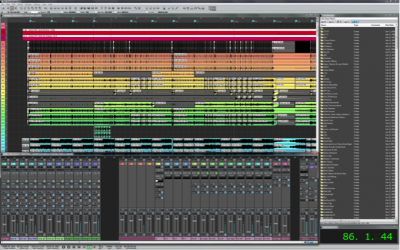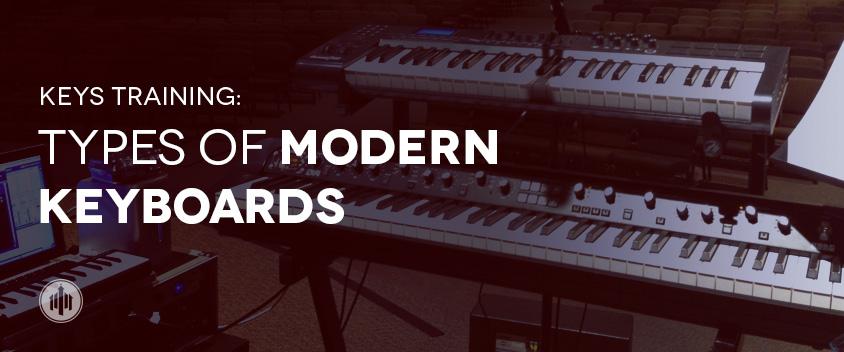
Keyboard technology has been rapidly changing over the past few decades to keep up with the diverse demands of musicians. In the 90’s it seemed every church acquired a digital piano or workstation to accompany the newly formed worship teams. Many of these instruments however now lay dormant due to either their complexity or lack of modern sounds. Teams today have a variety of needs and may have to explore several options before finding the right fit. Here is a brief rundown of what is currently on the market.
Types of Modern Keyboards
Stage Piano
The larger and more stationary digital pianos have given way to a keyboard more geared towards live performance. However stage pianos come packaged with sounds that appeal towards pianist/keys player needs in a more portable board. Solid acoustic piano, electric piano, organ, and synth sounds are included in most models. These boards can vary wildly in options but most major manufacturers offer some form of weighted 88 key model for their flagship or top of the line stage piano. Examples include the Yamaha CP series, Korg SV series, or any of the Nord Stage or Electro series. These are frequently used for worship teams.

Workstation
A keyboard or software package with a vast variety of sounds and functions allowing for performing, recording, editing, and programming beyond what stage pianos offer. Keyboard examples currently new on the market include the Korg Kronos series, Yamaha MOTIF series, and the Roland Fantom series. These are also frequently seen in churches.

Synthesizer
The term synthesizer is frequently misused interchangeably with the term “keyboard”. A simple definition of synthesizer is any device that allows you to create a sound from scratch. A more nuanced definition of synthesizer, or “synth” for short, is a device that is capable of creating entirely novel sounds through a variety of waveforms, filters, and effects. I use the term “device” since not every keyboard is a synthesizer nor is every synthesizer a keyboard. Synthesizers eventually gave birth to the keyboards of today and as such many of the desired synth sounds harken back to analog synthesizer sounds from the 1980’s era.
The majority of keys players use synth sounds that have been preprogrammed either by themselves or others for convenience and to save time. Almost every stage piano has onboard synth sounds and will categorize them as pad or lead type sounds. Some examples of on the market “traditional” synthesizers would include the Nord Lead series, Roland GAIA SH-01 or Jupiter series, Korg microKorg series, or anything from revered manufacturers like Moog or Sequential Circuits/Dave Smith instruments. These boards are rarely used in most worship team contexts but in the hands of a skilled programmer can be quite a musical asset to the team.
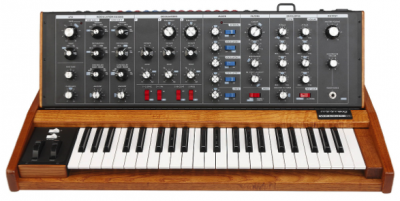
Combo Organs
These keyboards are geared towards organ players, particularly ones who would rather gig with a 15-30lb keyboard than potentially +400lb of vintage Hammond console and accompanying Leslie speaker cabinet. These models can come packaged with additional piano sounds like in the Hammond SK series or be strictly for organ only like the Nord C series or Hammond XK series. In the hands of a talented organist these can be a powerful addition to the team.
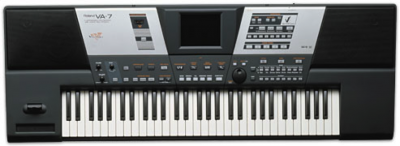
Arranger Keyboards/Workstations
These keyboards are typically used to accompany solo musicians that want extensive sequencing and backing track capabilities. Rarely used in the context of a full worship band.
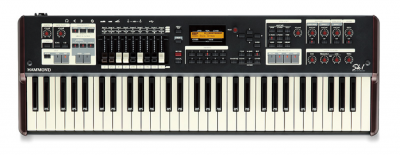
Note that there are a staggering number of in-between, hybrid, or combinations of stage piano/workstation/synthesizer options for keys players on the market. Add the capabilities of software and DAWs and you have millions of options for how you could design your worship keys setup. Speaking of DAWs…
DAW
DAW Stands for Digital Audio Workstation. These are software workstations which often have vastly more extensive and powerful features and cater to players who either need recording or advanced sequencing for live performance capabilities. Examples include Ableton Live, Avid Pro Tools, or Apple’s Logic Pro.
The best advice for teams looking to purchase a new board is get hands on and try the keyboard out. If this is not a possibility, look to resources like online forums or the keyboard manual PDF usually found through a quick search.
What keyboards or setups have your team had success with? Feel free to comment below.


